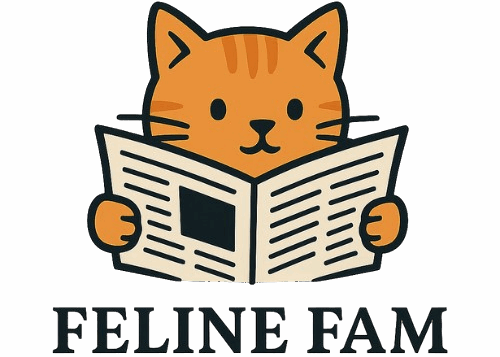Every cat owner knows that sweet face can hide a mischievous streak. You might think your precious furball is all purrs and head bumps, but some breeds come with personality quirks that can catch even seasoned cat parents off guard. These aren’t your typical lap cats content with afternoon naps.
While not all exhibit the same levels of aggression, some are quicker to snap or lash out than others. The breeds we’ll explore aren’t necessarily dangerous in the traditional sense, but they require understanding, patience, and sometimes a different approach to cat ownership. Let’s dive into the fascinating world of feline personalities that might surprise you.
The Deceptively Sweet Siamese

The Siamese cat is often considered among the more assertive , likely due to the breed’s tendency to get very jealous of other pets. These stunning blue-eyed beauties might look regal and composed, but beneath that elegant exterior beats the heart of a drama queen. Siamese cats are needy and clingy, becoming very attached to their favorite human.
Picture this: you’re petting another cat at a friend’s house, and your Siamese witnesses this betrayal from across the room. If they see you petting another cat or hanging out with a human, your Siamese may lash out in an attempt to get attention back on them. Their jealousy isn’t just cute possessiveness – it can escalate into genuine aggression that catches new owners completely off guard.
The High-Maintenance Sphynx

This breed is very demanding, which doesn’t just mean taking extra care of their skin due to a lack of fur. It also means the Sphynx cat always wants to be the center of attention. That wrinkled, hairless exterior might fool you into thinking they’re delicate creatures, but Sphynx cats are energy powerhouses wrapped in pink skin.
Sphynxes are hyperactive cats that need plenty of playtime, and they are also incredibly intelligent. However, high intelligence, coupled with low stimulation, could result in a Sphynx that lashes out of boredom. When your brilliant bald buddy doesn’t get the mental stimulation they crave, you might find your furniture paying the price. Constant entertainment is necessary to avoid aggressive tendencies.
The Wild-Hearted Bengal

Those gorgeous leopard-like spots aren’t just for show. The Bengal cat is large and feels as if it still belongs in the wild. Early generation Bengals (F1-F3) retain more wild traits due to their Asian Leopard Cat ancestry, with F1 and F2 generations typically requiring special permits. With its staking and untamed ancestry, aggressive traits in this particular breed are no real surprise. Bengal cats are high-maintenance, often leading to negative behavior if needs are unmet.
These athletic cats don’t just want attention – they demand it on their terms. Bengals are active cats and can wreak havoc on the furniture of nearby victims if they’re bored. This includes scratching and biting amongst insistent yowls. Think of them as the athletes of the cat world who need their daily training or they’ll find other ways to burn that energy.
The Fearless Bombay

As the Bombay breed is a hybrid mix, they have numerous strong behavior traits. They are known to be both fearless and aggressive and have a litter box aversion. This sleek black panther lookalike packs surprising punch in a compact frame.
They have sturdy and small-to-medium bodies, which means that they can be surprisingly forceful for their size during playfights. Much like the Siamese and Sphynx cat, the Bombay requires a significant amount of attention, which, when not met, can come out in aggressive tendencies. Don’t let their size fool you – these cats have the confidence of much larger felines and the attitude to match.
The Territorial Turkish Van

Turkish Vans are very territorial and people typically find them staring out the windows for long periods of time. This breed requires plenty of attention from their owners because they like being pampered, but if this cat becomes neglected then he might become aggressive towards other pets or even humans in your home.
These water-loving cats are like furry sentinels, constantly surveying their domain from windowsills. Their territorial nature runs deep, and introducing new pets can trigger responses that seem to come out of nowhere. They’re not just protective of their space – they’re protective of their humans too, sometimes to a fault.
The Surprisingly Feisty Scottish Fold

Those adorable folded ears and round faces make Scottish Folds look like living stuffed animals, but appearances can be deceiving. Although they are not as outwardly aggressive, they do have a feisty side if left on their own too much. With a gene mutation that causes the appearance of a shy little cretin, it’s hard to believe these ear-folded cuties have an aggressive side. Scottish Folds are known to be affectionate and cuddly creatures, but they can be pretty territorial in their established space.
Their sweet appearance masks a stubborn streak that emerges when they feel their routine or territory is threatened. This can cause issues if you plan to introduce a new cat into your home. So be sure to tread with caution when socializing this breed with new animal family members. They might purr sweetly while plotting their next territorial stand.
The Athletic American Shorthair

An intelligent and fairly easy-going cat breed, the American Shorthair is a popular pick among families. Much like the American Wirehair, they are independent creatures that love hunting if they can showcase their abilities outside. Their all-American good looks and friendly reputation might suggest they’re the golden retrievers of the cat world, but they have their limits.
While they may be low-maintenance and affectionate pets, this breed has been stated to enjoy human company without an overly hands-on nature. So, don’t take it personally when they wiggle out of your loving grip. Their independence can sometimes be mistaken for aloofness, but push their boundaries too far and you’ll discover their assertive side.
The Exotic Savannah

Another crossbreed cat type with a wild breed, the Savannah breed is a mix between an African Serval and a common house cat. With beautiful spotted fur and bursts of energy, you’ll have no trouble imagining this feisty cat in the wild African savannah landscapes. These tall, lean cats bring a piece of the wild into your living room, complete with wild instincts.
Savannah cats have a higher prey drive than their feline counterparts (due to their undomesticated ancestry). Thanks to their undomesticated roots, Savannahs have a stronger prey drive than other cats. They can get jealous quickly, which might lead to hissing, biting, or scratching when feeling neglected. Their wild heritage means they don’t just play – they hunt, even when that “prey” might be your ankles.
The Attention-Demanding Ocicat

Ocicats love being the center of attention and they can become aggressive if you do not give them your full amount of attention when they demand it. These cats do well with children and other pets such as dogs or even birds, but if you want to spend plenty of time with them then they will not get along very well with other animals in the home.
Apart from that, these cats are very smart and they like getting into trouble just for fun in order to test their intelligence against their owner’s capabilities in keeping an eye on them. They’re like that brilliant child who acts out when they’re bored, except this child has claws and can reach your highest shelves.
The Deceptively Calm Korat

Korats are one of the friendliest breeds among domestic cats when it comes to meeting strangers. However, if this cat is kept exclusively indoors then he can become aggressive towards other pets or even humans in his home. These silver-blue beauties from Thailand might charm visitors, but cabin fever can transform their personality completely.
It is important for an owner to spend plenty of time playing with his pet so that he does not lash out at everyone around them. Without proper outlets for their energy and intelligence, these social cats can become frustrated and take it out on whatever’s nearby – including their beloved humans.
The Independent Egyptian Mau

Egyptian Maus are natural-born hunters, so it is important for them to spend plenty of time outside in order for this cat to stay out of trouble indoors. They like playing games with their owners, but they are typically not very cuddly. These spotted speedsters are the only naturally spotted domestic breed, capable of running up to thirty miles per hour.
If you try to hug or snuggle with this cat, it will run away from you because it is not the type of animal that enjoys being touched in unnatural ways. These cats take time to get used to new people in their household, but once they are comfortable around them then this breed tends to be very loving towards these strangers. Their hunting instincts run deep, and forced affection can trigger defensive responses that seem aggressive.
The Surprisingly Moody Pixie Bob

Pixie Bob is a friendly and self-assured breed that loves to chat, but not in typical meows! They’re more into growls and chirps, especially when expressing themselves to their humans or strangers. Their wild bobcat appearance isn’t just for show – these cats communicate like their wild cousins.
Pixie Bobs are big and muscular, like wild relatives, so their playfulness can be quite robust. Don’t let their size intimidate you – this unique breed has a lot of love to give! Their idea of gentle play might be overwhelming for families used to more delicate breeds, and their size gives them the power to back up their wild communication style.
Understanding the Real Danger

The truth is, there is no single cat breed that can be dangerous. Although some breeds like Bengal or Savannah cats have wild ancestry their temperament changes due to proper socialization and care. The real “danger” these breeds present isn’t physical harm – it’s the challenge they pose to unprepared owners.
A cat’s temperament is influenced more by upbringing and socialization than by breed characteristics alone, detailing notable breeds like the Bengal and Savannah that may need careful handling. These aren’t malicious animals plotting your downfall over their food bowls. They’re intelligent, energetic cats with specific needs that, when unmet, can manifest as behavioral issues that seem aggressive or dangerous to the uninitiated.
What makes these breeds “deceptively dangerous” isn’t their potential for harm, but rather how their stunning looks and initial charm can mask their complex personalities and demanding needs. Each of these cats requires dedicated owners who understand that beauty and brains often come with a price – your undivided attention, proper stimulation, and respect for their individual quirks. What do you think about these fascinating feline personalities? Tell us in the comments.





